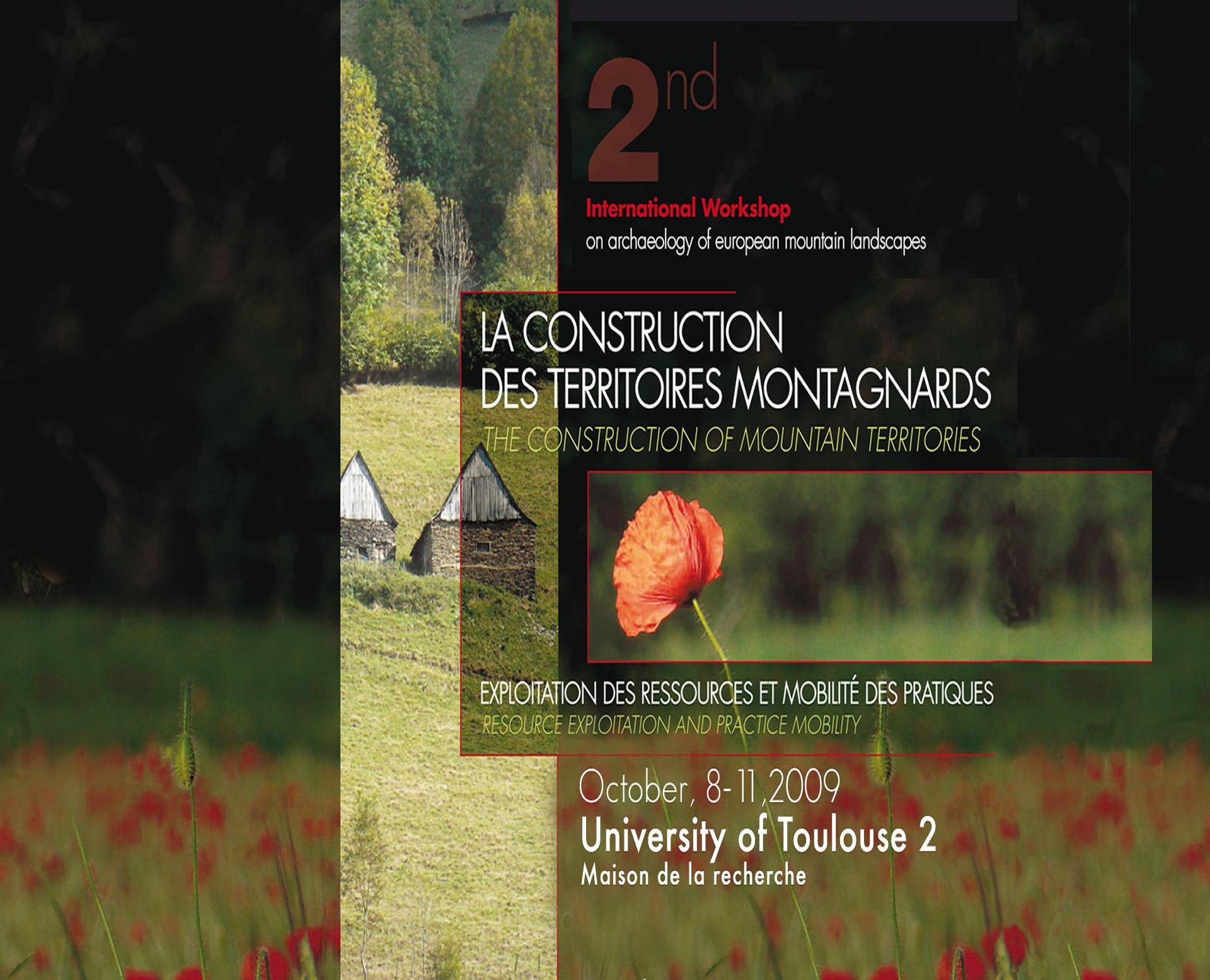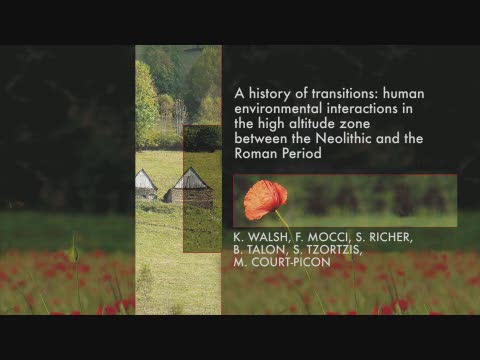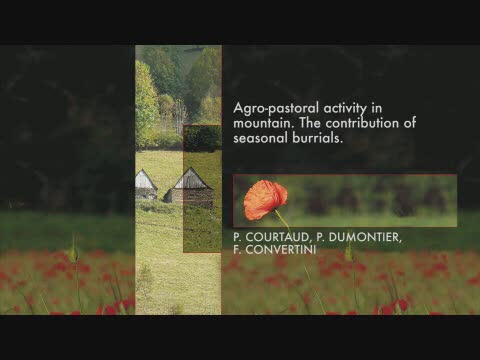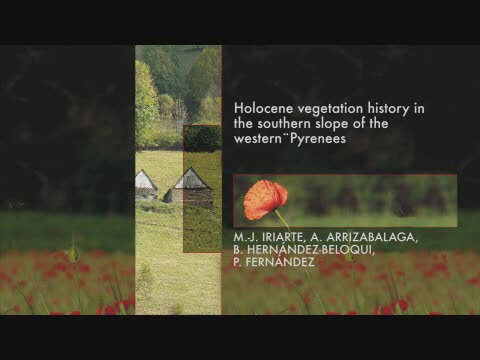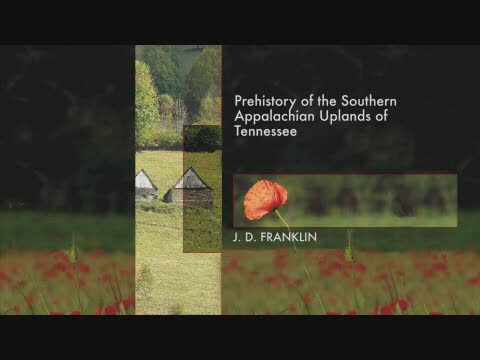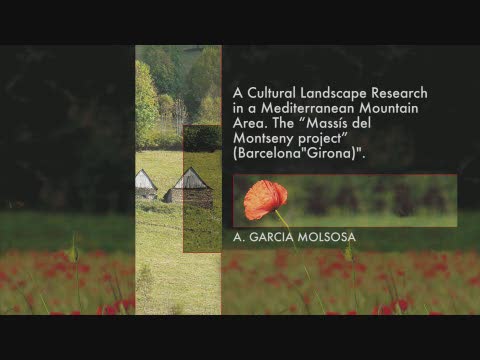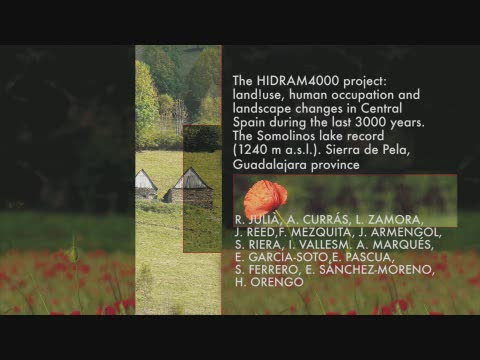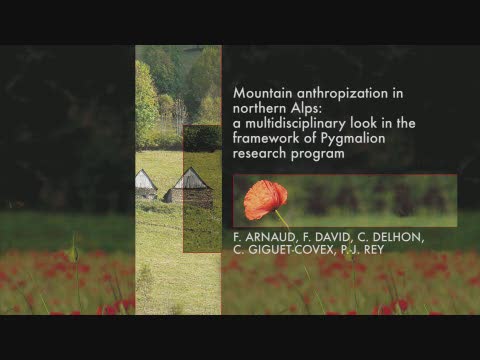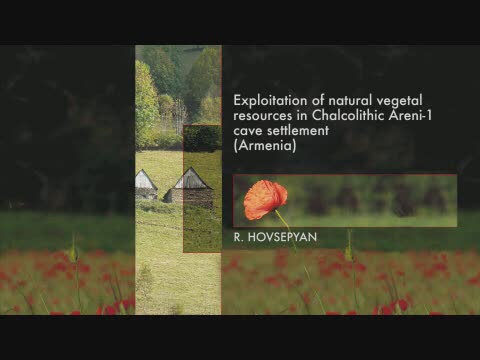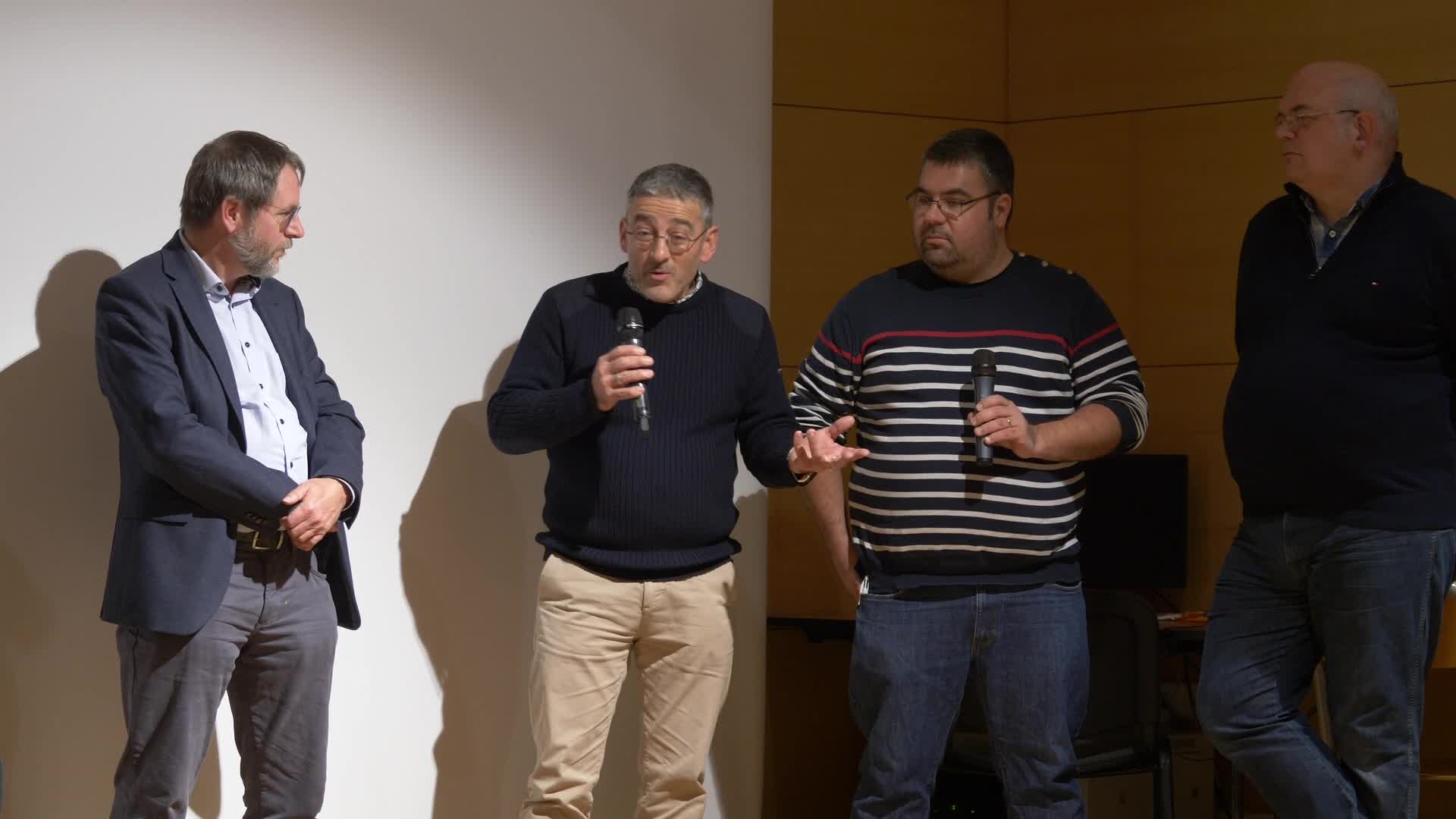Notice
Exploitation des vallées andorranes depuis le Néolithique/ J.-M. Palet Martinez, H. Orengo Romeu
- document 1 document 2 document 3
- niveau 1 niveau 2 niveau 3
Descriptif
L'exploitation des ressources des vallées andorranes du Madriu-Perafita-Claror et de la chaîne du Cadi (Pyrénées orientales) depuis le Néolithique à partir des données archéologiques et paléoécologiques : mobilité des pratiques et dynamique des paysages culturels. PALET MARTINEZ Josep Maria et Hèctor ORENGO ROMEU. In "La construction des territoires montagnards : exploitation des ressources et mobilité des pratiques", 2e International Workshop on archaeology of european mountain landscape, organisé par les laboratoires GEODE, FRAMESPA, GEOLAB et Chrono-Environnement. Université Toulouse 2-Le Mirail, 8-11 octobre 2009. [seconde journée]
This paper presents evidence drawn from an ongoing integrated archaeological and palaeoenvironmental research program which aims to understand the long"term shaping of a high mountain cultural landscape. The Madriu-Perafita-Claror valleys (Eastern Pyrenees, Andorra), included in the UNESCO World Heritage List, show a pronounced spatial variability in geomorphology, vegetation and human practices. This is closely related to the valleys’ verticality (from 1050 to 2905 m.a.s.l.) and the predominant N-S slope exposure. The Cadi chaine, placed in the Catalan pre-Pyrenees is characterized by a forest stage and a alpine area intensely exploited.
Palaeoenvironmental and archaeological studies have been carried out in high spatial and temporal resolution. The distribution of the more than 500 archaeological structures recorded from the Early Neolithic to Modern times also suggests a highly dynamic organization of the valleys’ land-use in the past. On the basis of archaeological and palaeoecological data, different chronological patterns and spatial land-use distribution could be formulated at a micro"regional scale during the Prehistory. The pollen record suggests a potential earliest human occupation up to the subalpine belt at the Mesolithic-Early Neolithic transition (ca 6400"6000 BC). However, it is during the Early and Middle Neolithic (ca 4500-3050 BC) that both archaeological and palaeoecological data attest pastoral activities in the highest alpine areas. From the Late Neolithic (ca 2300 BC), an altitudinal landscape structuration is registered, a process which becomes more pronounced during the Early Bronze Age (ca 2100"1700 BC). It has been also reported that land use differs from closer valleys, corroborating the idea of heterogeneity in the management of high mountain areas during prehistory.
Grazing, metallurgy and forest exploitation have been the main activities modelling those areas. The exploitation of high mountain spaces intensifies at Roman times with the development of metallurgic activities and the exploitation of pine resign.
Intervention / Responsable scientifique
Dans la même collection
-
La construction des territoires montagnards : exploitation des ressources et mobilité des pratiques…
GalopDidierThe occupation and the exploitation of mountain environments, both during conquest and maximum demographic phases, or on the contrary, during desertification phases, differ in geographical
-
Human environmental interactions in high altitude zone between Neolithic and roman period / K. Walsh
WalshKevinA History of Transitions : human environmental interactions in the high altitude zone between Neolithic and roman period. Kevin WALSH. In "La construction des territoires montagnards : exploitation
-
L'agro-pastoralisme en milieu montagnard : l'apport des sépultures saisonnières / Patrice Courtaud
CourtaudPatriceL'agro-pastoralisme en milieu montagnard : l'apport des sépultures saisonnières. Patrice COURTAUD. In "La construction des territoires montagnards : exploitation des ressources et mobilité des
-
L'évolution végétale holocène sur le versant sud des Pyrénées occidentales / Maria-José Iriarte
IriarteMaría JoséL'évolution végétale holocène sur le versant sud des Pyrénées occidentales. Maria José IRIARTE. In "La construction des territoires montagnards : exploitation des ressources et mobilité des pratiques"
-
Prehistory of the Southern Appalachian uplands of Tennessee / Jay Franklin
FranklinJay D.Prehistory of the Southern Appalachian uplands of Tennessee. Jay FRANKLIN. In "La construction des territoires montagnards : exploitation des ressources et mobilité des pratiques", 2e International
-
A cultural landscape research in a mediterranean mountain (Barcelona-Girona) / A. Garcia Molsosa
Garcia MolsosaArnauA cultural landscape research in a mediterranean mountain area : the "Massis del Montseny project" (Barcelona-Girona) / A. GARCIA MOLSOSA. In "La construction des territoires montagnards :
-
The Hidram4000 project : land use, human occupation and lanscape changes in Spain / A. Curras
Currás DominguezAndresThe Hidram4000 project : land use, human occupation and lanscape changes in Spain during the last 3000 years. The Somolinos lake record (1240 M A.S.L.) : Siera de Pela, Guadalajara Province. Andres
-
Mountain anthropization in Alps : a multidisciplinary look in the Pygmalion program / F. Arnaud
ArnaudFabienMountain anthropization in Alps : a multidisciplinary look in the framework of Pygmalion research program. Fabien ARNAUD. In "La construction des territoires montagnards : exploitation des ressources
-
Exploitation of natural vegetal resources in chalcolithic areni-1 cave (Armenia) / R. Hovsepyan
HovsepyanRomanExploitation of natural vegetal resources in chalcolithic areni-1 cave settlement (Armenia). Roman HOVSEPYAN ovsepyan, Roman. In "La construction des territoires montagnards : exploitation des
-
Territorial practices, landscape dynamics and mobilities in a french mountain / P. Allée, Y. MIras
AlléePhilippeMirasYannickTerritorial practices, landscape dynamics and spatio-temporal mobilities in a french medium mountain : integrated approach combining archaeological and paleoecological inverstigations performed in the
-
Wildfires in european alps : frequent yesterday, rare today, frequent tomorrow ? / W. Finsinger
FinsingerWalterWildfires in european alps : frequent yesterday, rare today, frequent tomorrow ?. Walter Finsinger. In "La construction des territoires montagnards : exploitation des ressources et mobilité des
-
New data about the human occupation, environmental history, landscape changes in Pyrenees / Emengol…
Gassiot BallbèErmengolThe Excava project : new data about the human occupation, environmental history and landscape changes in southern Pyrenees. Emengol GASSIOT BALLBE. In "La construction des territoires montagnards :
Sur le même thème
-
Glozel-Session 2 : Table ronde conclusive
AngevinRaphaëlBonFrançoisGilabertChristopheGernigonKarimZurbachJulienTable ronde conclusive de la session n°2 - Glozel et la Préhistoire : construction(s) intellectuelle(s) et institutionnelle(s) - du colloque Glozel dans l’histoire de l’archéologie française : sources
-
Genèse et apories de la Préhistoire récente au Proche-Orient
BreniquetCatherineCatherine Breniquet revient sur les enjeux de la naissance de la préhistoire récente du Proche-Orient.
-
Le « Mirage oriental » de Salomon Reinach et la question primordiale de l’origine de la civilisatio…
GernigonKarimDès la publication du premier fascicule relatant ses fouilles de Glozel avec Fradin (1925), Morlet fait référence à l'article « Le Mirage oriental » publié par Salomon Reinach en 1893 dans L
-
L’archéologie néolithique à la fin du XIXe et au début du XXe siècle : entre construction scientifi…
GilabertChristopheÀ la fin du XIXe et au début du XXe siècle, la question du Néolithique est encore fortement liée à une vision évolutionniste de l’apparition de la « civilisation » en Europe et sur le pourtour
-
Glozel ou le « trompe-l’œil » d’une nouvelle résolution du hiatus entre Paléolithique et Néolithique
BonFrançoisFrançois Bon s'intéresse à la manière dont s'est difficilement opérée la reconnaissance d'une période de transition entre le Paléolithique et le Néolithique...
-
Les grandes étapes de l’alimentation, du Paléolithique à l’époque gauloise
FlouestAnneAnne Flouest, géologue et docteure en paléoclimatologie, revient sur l’étonnante évolution des usages alimentaires du Paléolithique à l’époque gauloise.
-
Approvisionner le feu en bois. Regard anthracologique sur l’exploitation du Bois des Lens et les us…
VaschaldeChristopheChardonneau-HenneuseJulienApprovisionner le feu en bois. Regard anthracologique sur l’exploitation du Bois des Lens et les usages du combustible par les potiers de l’Antiquité tardive.
-
Les massacres de masse dans le Néolithique centre-européen (5200 - 4000 BC). Un état de la question
JeunesseChristianDepuis la retentissante et inaugurale découverte du dépôt humain de Talheim, en 1983, les fouilles de structures renfermant des groupes d’individus décédés de mort violente se sont multipliées dans le
-
Building and belonging: architecture and memory in neolithic orkney
EdmondsMark R.Talk by Mark EDMONDS, (Archeologie, York), as part of the workshop "Memory, Place, and Material Culture", organized by John SUTTON, 2022-2023 research fellow at the Paris IAS, Emeritus Professor at
-
L’Alimentation des premiers agriculteurs-éleveurs au Néolithique
GoudeGwenaëlleL'invitée de cette émission est Gwenaëlle Goude anthropobiologiste et bioarchéologue, chargée de recherche CNRS au LAMPEA (Laboratoire méditerranéen de Préhistoire Europe et Afrique), laboratoire de
-
Technologie des figurines néolithiques en Egée et en Afrique du Nord
FassoulasArgyrisIntervention (podcast) de Argyris Fassoulas (Chercheur associé UMR 7041 ArScan, équipe Protohistoire égéenne, Nanterre) dans le cadre des séminaires du cycle " Sciences pour l’Archéologie :
-
Historiographie du Néolithique. 1 / Jean Guilaine
GuilaineJeanCe séminaire relate la mutation de la recherche préhistorique au cours des quatre dernières décennies, et plus précisément l’histoire de la recherche néolithique française qui est celle d’une


